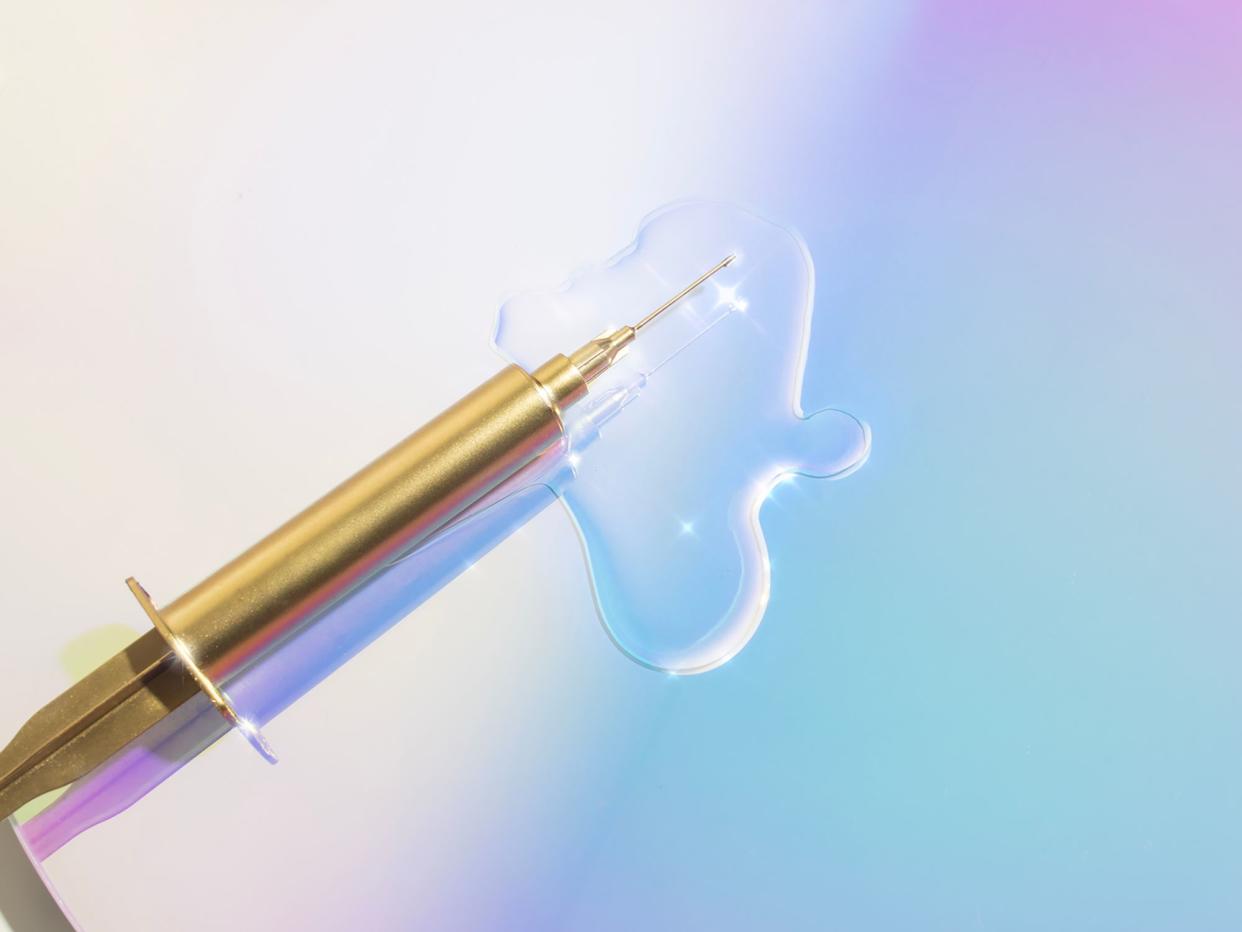Should You Get Fillers? Here’s How to Tell, According to Pros

Bethany Birnie / Stocksy
Medically reviewed by Dara Liotta, MD, FACSFact checked by Anna Harris
The word "filler" usually doesn't have the most positive connotations. Filler conversations are boring, filler relationships suck, and filler anything is usually just something to pass the time until a better option comes along.
Fillers in regards to your face, however, are a different story. They can enhance and shift your appearance, filling in wrinkles and transforming your bone structure. To find out exactly how fillers work—and who should and should not consider them—we spoke with plastic surgeon John Diaz, MD, and naturopathic physician Laura Lewman, ND. Read on for what they told us.
Meet the Expert
John Diaz, MD, is a Beverly Hills-based board-certified plastic surgeon.
Laura Lewman, ND, is an aesthetic naturopathic physician with SkinSpirit.
What Are Fillers?
The term "fillers" is used to refer to a variety of medical products "designed to rejuvenate the face by filling in areas of volume loss," Diaz explains. "They target lines, wrinkles, and volume loss by filling in the areas."
"Two of the most common filler brands in the United States are Restylane and Juvéderm," adds Lewman. "Both brands carry many types of fillers that can be used strategically to treat different areas or concerns." No matter which brand you go with, "all fillers, regardless of how they are packaged, must be prepared in syringes and injected using small needles. No surgery or incisions are required," Diaz explains.
Who Should Consider Fillers?
Here are a few shortcuts that can help you figure out if fillers will help you meet your aesthetic vision.
You're Focused on the Bottom Half of Your Face
Diaz says that one of the telltale signs that you're a candidate for fillers is a noticeable deepening of the nasolabial folds (these are the deep lines that form next to your mouth, aka marionette lines). Lewman cites camouflaging undereye hollows, filling in lines and folds, and volumizing the lips as other common reasons to consider fillers.
You Want to Resurrect Your Cheekbones
If you notice your once-prominent cheekbones deflating, especially when you look at your face at an angle, fillers can help. "It's aesthetically pleasing to have a defined curvature over this area," Diaz says. "Once the curvature begins to flatten, fillers can be used to restore the shape in this area."
You're Looking to Restructure Your Face
Diaz tells us that some younger people get fillers for a surprising reason: to improve their bone structure. "For example, there are many young patients who may have very weak bone structure around the cheek or the jaw," he says. "In most of these cases, the lack of fullness is not due to aging, but rather genetics."
And this approach to filler can go beyond bone structure. "When used in a more global way, [fillers] can completely rejuvenate and transform a face," says Lewman. "Just today, I used filler to minimize the appearance of a childhood facial scar."
Who Shouldn't Consider Fillers?
Your Concerns Are Primarily in the Top Half of Your Face
If your concerns lie primarily around your eyes or forehead, neuromodulators might be the way to go. "Neuromodulators, such as Botox or Dysport, temporarily relax any muscle they're injected into and, therefore, are generally used only for wrinkles caused by facial expressions such as frown lines, forehead lines, and crow's feet," says Lewman. "Consider neuromodulator treatment if you're primarily concerned with lines and wrinkles in the upper part of your face. Neuromodulators and fillers can be used together to create some incredible results, though."
Your Concerns Are Deeper
"People with a lot of loose skin, heavy jowls, submental fat (double chin), or a lot of neck skin laxity are generally better candidates for plastic surgery," says Lewman. "Other reasons to consider plastic surgery include extra or heavy skin in the upper eyelid area, severe bags under the eyes, or a very long distance between the bottom of the nose and the top lip."
If you're not sure if that's you, don't worry—that's what consultations are for. "A great aesthetic practitioner will tell you if you're a better candidate for surgery than non-invasive treatments such as fillers or neuromodulators," adds Lewman.
Who Should Definitely Avoid Filler?
Diaz does warn that fillers should be used by adults only; he says they can hinder the bone structure if it isn’t fully developed. Additionally, Lewman tells us that "people with certain autoimmune diseases, medical problems such as diabetes, or with recent severe illness or chronic infection are poor candidates for dermal fillers," as are folks with very thin or loose skin. "I also avoid treating people with unrealistic expectations since it's extremely hard to make these people happy," she says.
How Long Can You Expect Fillers to Last?
Diaz says hyaluronic acid-based fillers, like Juvederm, can last anywhere from six months to a whole year. “Consistent treatments will give you optimal results, and you may need less filler over time,” he says. He adds that Voluma—a type of filler with a slightly different composition—can actually last up to two full years.
Learn More: Facial Fillers 101: A Complete Guide to Injectable Fillers
Read the original article on Byrdie.

